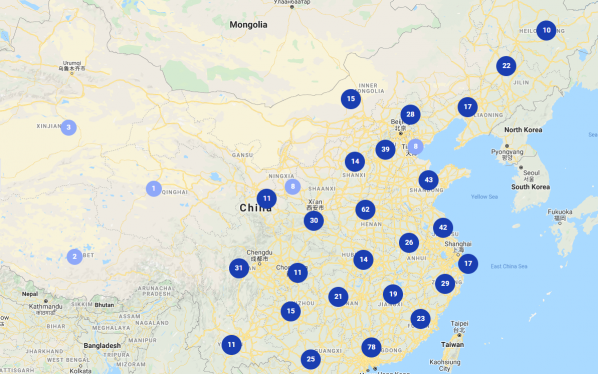
We have revised and upgraded our dual-language, interactive Strike Map over the holidays. The new version allows you to search particular locations and industries in much more detail, and also displays the data in a variety of graphic formats such as histograms and pie charts.
Starting this year, new incidents will be added to the map with more frequency thanks to our automated searching system. To get the latest updates as soon as they are posted, please follow @CLBStrikeMap (English) and @bagongditu (Chinese) on Twitter.
In the old map, you could only search by province but now you can now select specific cities in each province as well, such as Shenzhen in Guangdong or Zhengzhou in Henan, etc. You can also search for incidents that occurred in one particular industry, in one place, over a set period of time. For example, the electronics industry in Guangdong from February 2019 to February 2020. Just click on the individual incidents for more details.
You can also search simply by typing in a keyword, such as “supermarket,” to see all the protests by supermarket employees over the time period selected. By default, the map displays the last six month’s data but records go back to 2011.
You can access the new graphics features of the map by clicking the “Graphs” button in the bottom left-hand corner on the map, which will take you to a histogram displaying the number of incidents in each year or each month. Again, you can fine tune the graph to display worker protests in specific sectors over time. For example, delivery driver protests between February 2015 and February 2020.
If you select the pie chart function you can compare data based on different criteria such as industry, employee demands and company ownership type. Just move your cursor over the chart to display the actual number and percentage of incidents in each category.
The bar chart combines the histogram and pie chart functions so that the data for each year or month over a defined time period can be broken down into specific industries etc.
Finally, just a reminder that the Strike Map is not a definitive record of all the strikes in China. We only record those incidents that are in the public domain, usually posted on Chinese social media and occasionally in the official media as well. Therefore, we caution against comparing incident totals directly over an extended period of time, since sampling rate has varied over the years. We estimate that - based on the occasional and partial statistics issued by the national and local governments in China - the Strike Map currently accounts for about five to ten percent of all incidents of worker collective action in China.
